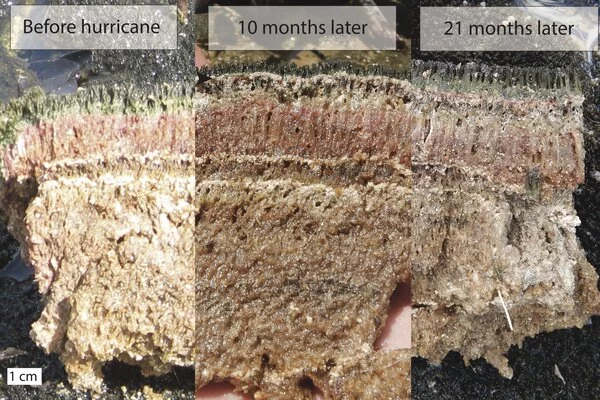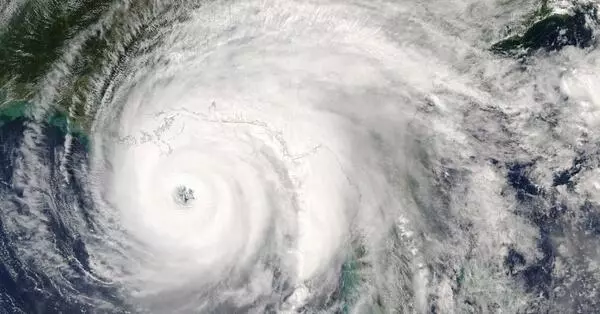Microbial communities are at the heart of all ecosystems, but their behavior in disturbed environments is difficult to quantify and predict. Understanding the factors that influence microbial community stability, such as resistance (insensitivity to disturbance) and resilience (rate of recovery after disturbance), is critical for predicting community response to disturbance.
After seemingly catastrophic hurricane damage, a primordial groundcover critical to the survival of a variety of coastal lifeforms recovered in a matter of months. The discovery, led by a Johns Hopkins University geochemist and published today in Science Advances, provides rare hope for the future of one of the planet’s most important ecosystems as climate change alters the global pattern of intense storms.
“The good news is that in these types of environments, there are these mechanisms that, because they recover so quickly, can play an important role in stabilizing the ecosystem,” said Maya Gomes, an assistant professor of Earth and Planetary Sciences at Johns Hopkins. “What we saw was that they had just started growing again, which means that as hurricanes become more common as a result of climate change, these ecosystems will be relatively resilient.”
The good news is that in these types of environments, there are these mechanisms that, because they recover so quickly, can play an important role in stabilizing the ecosystem. What we saw was that they had just started growing again, which means that as hurricanes become more common as a result of climate change, these ecosystems will be relatively resilient.
Maya Gomes
The team, led by researchers from the California Institute of Technology and the University of Colorado, Boulder, had been studying Little Ambergris Cay, an uninhabited island in Turks and Caicos, specifically the island’s microbial mats. Microbial mats are squishy, spongey ecosystems that have supported a diverse array of life for eons, from microscopic organisms that live in the upper oxygenated layers to the mangroves it helps root and stabilize, which in turn provides habitat for even more species.
Mats can be found all over the world in wildly different environments, but the variety this team studied are commonly found in tropical, saltwater-oriented places, exactly the coastal locations most vulnerable to severe storms.

In habitats as diverse as soil and the human body, key ecosystem processes are driven by microbial communities – local assemblages of microorganisms that interact with each other and their environment. Thus, microbiology research in biomedical, environmental, agricultural, and bioenergy contexts shares a common challenge: to predict how functions and composition of microbial communities respond to disturbances.
The eyewall of Category 5 Hurricane Irma directly hit the island where the team was working in September 2017. “Once we knew everyone was safe,” Gomes explained, “we were uniquely positioned to investigate how the mat communities responded to such a catastrophic disturbance.”
The tropical cyclone’s immediate impact was catastrophic, choking the mats with a blanket of sandy sediment that decimated new growth. However, when the team returned to the site in March 2018, July 2018, and June 2019, they were ecstatic to see the mats regrowing, with new mats visible sprouting from the sand layer in as little as ten months.
The rapid growth of new mats suggested that storm disruption may help these ecosystems adapt to changing sea levels.
“For islands and tropical locations with this type of geochemistry, Florida Keys would be one in the United States,” said lead author Usha F. Lingappa, a postdoctoral scholar at the University of California, Berkeley. “This is sort of good news in that we think the mangrove ecosystem as well as the microbial maps are pretty well stabilized and resilient.”





